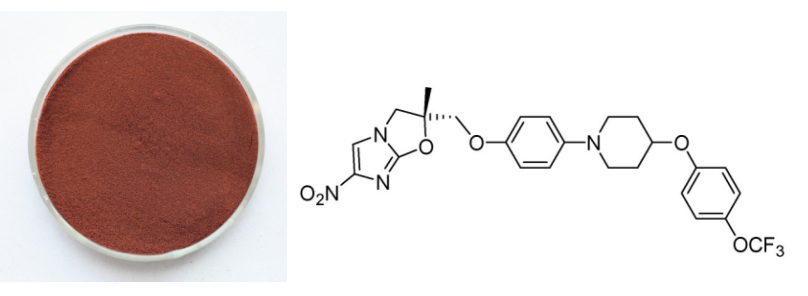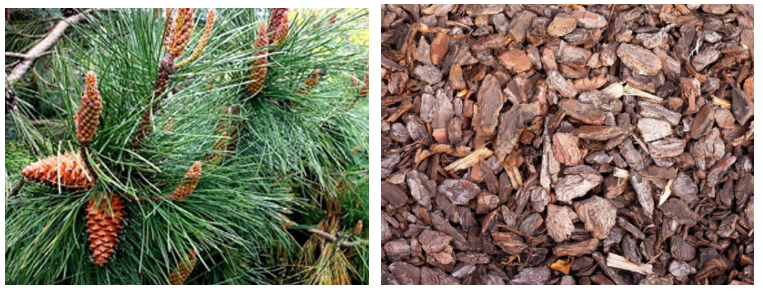12 Years Manufacturer Pine bark Extract Supply to El Salvador
12 Years Manufacturer Pine bark Extract Supply to El Salvador Detail:
[Latin Name] Pinus pinaster.
[Specification] OPC ≥ 95%
[Appearance] Red brown fine powder
Plant Part Used: Bark
[Particle size] 80Mesh
[Loss on drying] ≤5.0%
[Heavy Metal] ≤10PPM
[Storage] Store in cool & dry area, keep away from the direct light and heat.
[Shelf life] 24 Months
[Package] Packed in paper-drums and two plastic-bags inside.
[Net weight] 25kgs/drum
[What is Pine bark?]
Pine bark, botanical name Pinus pinaster, is a maritime pine native to southwest France that also grows in countries along the western Mediterranean. Pine bark contains a number of beneficial compounds that are extracted from the bark in a way that doesn’t destroy or damage the tree.
[How does it work?]
What gives pine bark extract its notoriety as a powerful ingredient and super antioxidant is that it’s loaded with oligomeric proanthocyanidin compounds, OPCs for short. The same ingredient can be found in grape seeds, the skin of peanuts and witch hazel bark. But what makes this miracle ingredient so amazing?
While OPCs found in this extract are mostly known for their antioxidant-producing benefits, these amazing compounds exude antibacterial, antiviral, anticarcinogenic, anti-aging, anti-inflammatory and anti-allergic properties. Pine bark extract can help reduce muscle soreness and may help improve conditions relating to poor circulation, high blood pressure, osteoarthritis, diabetes, ADHD, female reproductive issues, skin, erectile dysfunction, eye disease and sports stamina.
Seems like it must be pretty amazing, but let’s look closer. The list goes on a bit further, as the OPCs in this extract may “inhibit lipid peroxidation, platelet aggregation, capillary permeability and fragility, and to affect enzyme systems,” which basically means it may be a natural treatment for many serious health conditions, such as stroke and heart disease.
[Function]
- Lowers Glucose Levels, Improving Diabetic Symptoms
- Helps Prevent Hearing Loss and Balance
- Staves Off Infections
- Protects the Skin from Ultraviolet Exposure
- Decreases Erectile Dysfunction
- Reduces Inflammation
- Helps Increase Athletic Performance
Product detail pictures:

Related Product Guide:
Fast and superior quotations, informed advisers to help you choose the correct merchandise that suits all your requirements, a short generation time, responsible quality control and different services for paying and shipping affairs for 12 Years Manufacturer Pine bark Extract Supply to El Salvador , The product will supply to all over the world, such as: Luxemburg, British, Ireland, We have exported our products all over the world, especially the USA and European countries. Furthermore, all of our products are manufactured with advanced equipment and strict QC procedures to ensure high quality.If you are interested in any of our products, please don't hesitate to contact us. We will try our best to meet your needs.
Lose Weight with Fuxion Te Nocarb Keep your carbs under control with delicious Te NoCarb.
It improves the metabolism of sugars and raises your energy levels. It may also help to reduce and slow the absorption of carbohydrates and fats. Contains yacón and soy extract, chicory inulin, green tea and soluble fiber .
Ingredients:
Maltodextrin, BENEO GR (inulin), citric acid, soy extract, yacon (smallanthus sonchifolius) extract, green tea (camellia sinensis) extract, stevia (stevioside sweetener), flavoring. Stevia is a natural, calorie-free sweetener. It is Aspartame-free, Lactose-free, casein-free and gluten-free. No artificial colorants.
We are WikiFuXion Youtube Official Channel
Is inability to perform sexually hurting your relationship? Smt. Hansaji Jayadeva Yogendra, Director of The Yoga Institute in Mumbai talks about this simple Yoga asana which can help you improve. For more on yoga for better sex, visit https://www.thehealthsite.com/sexual-health/control-premature-ejaculation-with-yoga-p114/
It's really lucky to find such a professional and responsible manufacturer, the product quality is good and delivery is timely, very nice.







